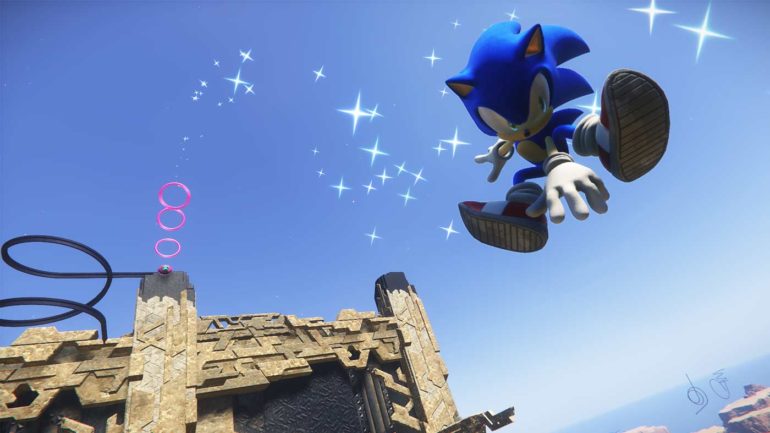Sonic Frontiers, the bold new 3D Sonic adventure, has divided the internet like few other recent examples I can think of. Taking more than a little inspiration from the world design and mechanics of other games, Frontiers’ biggest challenge is convincing fans that Sonic belongs in this format both mechanically and narratively. I’m cautiously optimistic about the whole thing, especially after having spending a good 30-40 minutes playing around in the game’s second island area at Gamescom 2022. To find out more about how Sonic Team approached this unique mash-up of ideas though, I was also fortunate enough to briefly speak to none other than the head of Sonic Team and one of the game’s producers, Takashi Iizuka. Have a read of our chat below:
What can you tell me about Sonic Frontiers? What’s happening in the story this time around?
Takashi Iizuka: Sonic, Tails and Amy believe that the Chaos Emeralds have all kind of assembled here on Star Hall island, this mysterious place they’ve never gone to. So they get in the Tornado, the plane, and they fly out to investigate what’s going on here. As they’re kind of approaching the island, for reasons unknown, they get sucked into this vortex that is actually Cyberspace. For some reason, only Sonic is able to get back out of Cyberspace, and he arrives at this mysterious world not really sure what’s going on, not knowing what to do but knowing he needs to save his friends and he needs to figure out what’s going on this island.
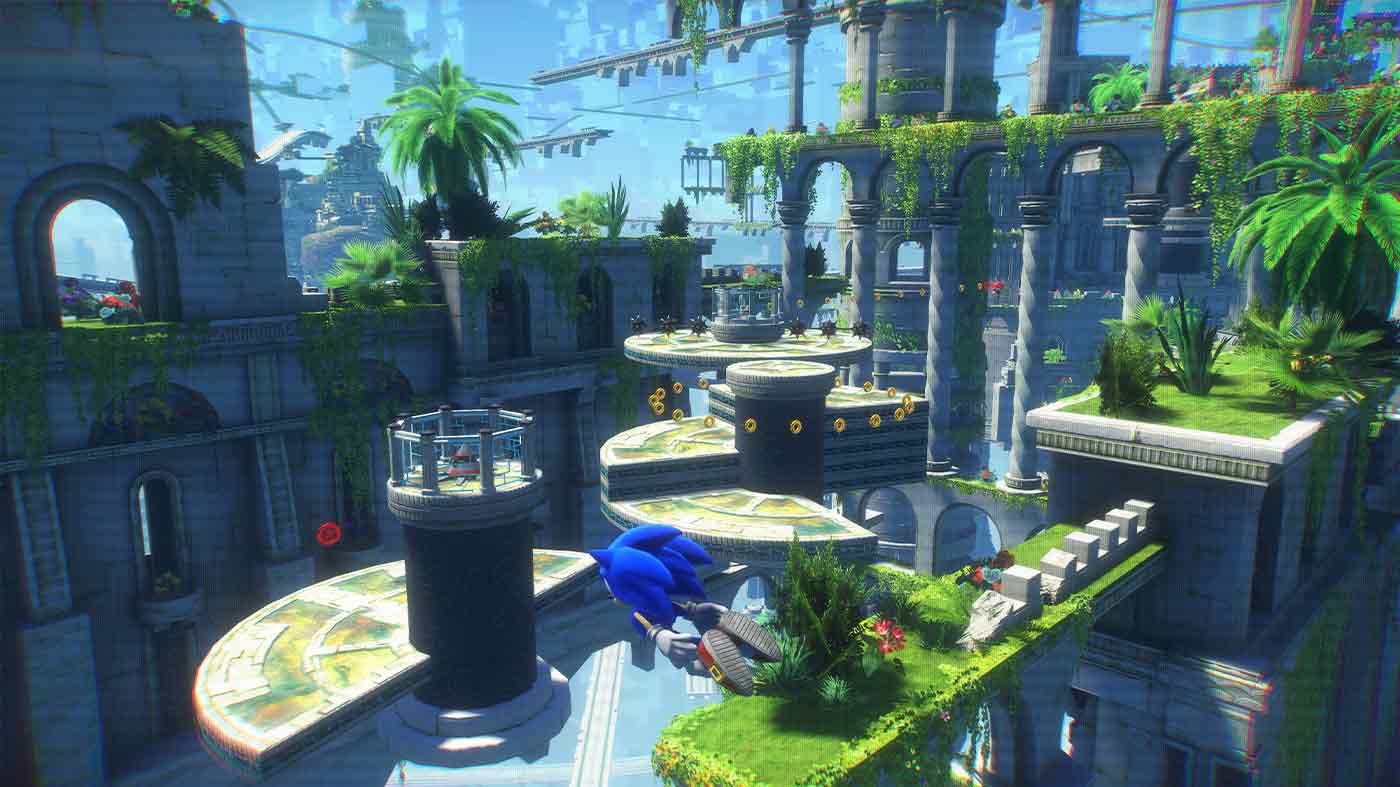
You’ve got both the open zone and the Cyberspace types of areas in this game, what can you tell me about the differences and how much time we’ll spend in each?
TI: For about two-thirds of the game, you’re going to be in the open zone area. But Cyberspace is another one of these places you get to go to outside of this mysterious island and Cyberspace is, if we think about the remaining one-third of the game, going to be that linear format that previously everyone really liked. You’re at the start, you need to get to the goal and your technical skills can get you there super fast. It’s that style of gameplay that we know people really like.
And is there a reason that a few of the Cyberspace stages we’ve seen look very close to previous 3D Sonic titles in terms of level and visual design?
TI: The reason why it looks familiar is that Cyberspace is creating this digital world based off of Sonic’s memories. So even though you’re kind of there on this mysterious island, you go through the portal, and you’re like, I’ve seen all these places before. It’s because they are created from Sonic memories. So the gameplay is going to be familiar, the look and feel of the game is going to be familiar.
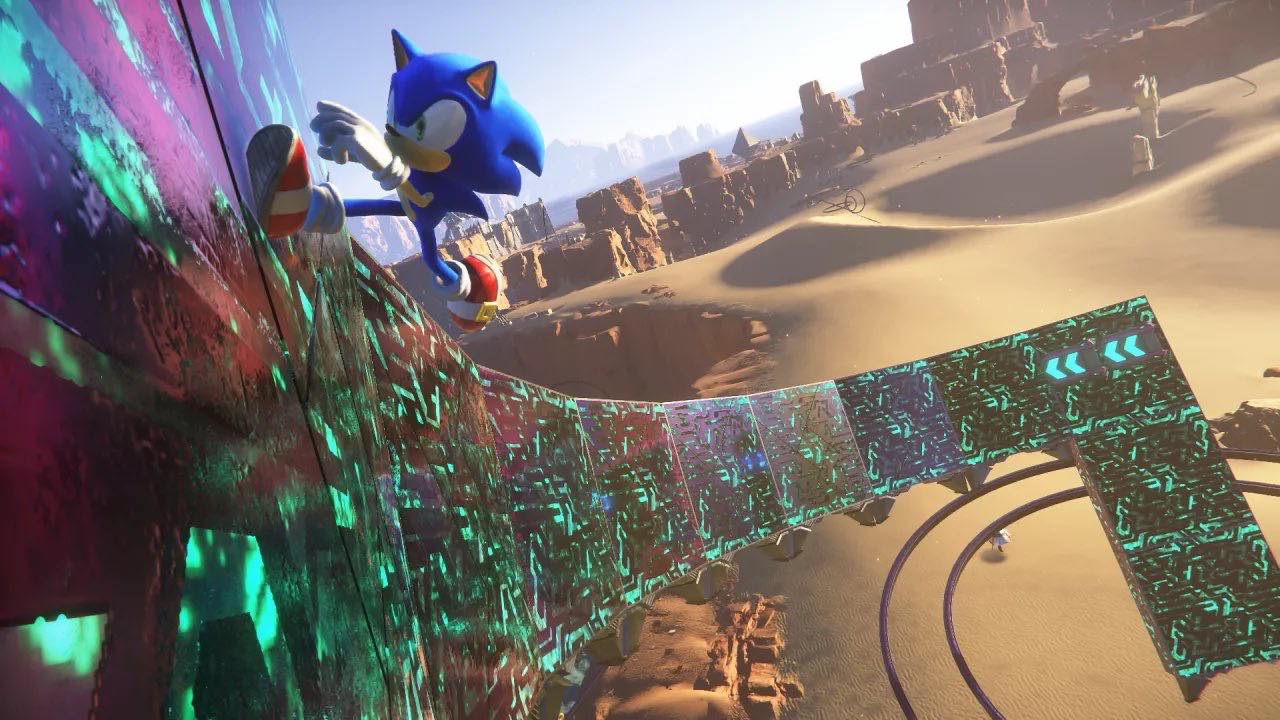
How do you approach designing big, open spaces for a character that can move through them so quickly?
TI: In the previous games always had a path that could be designed so Sonic could run through there very fast. But we took this step from always having a predetermined path for Sonic, and now saying, well, now we’re going to have this open space where you can run around in any direction. And since, you know, we couldn’t really control the path of the player because it’s now free for the player to run around as they want, that was kind of the challenge.
THE CHEAPEST COPY: $79 WITH FREE DELIVERY FROM AMAZON
How do we make this high speed action that everyone knows and loves from Sonic the Hedgehog in this open format for people to run around freely? And we did spend one to two years just creating stuff and testing it out. Does it work as high speed action? Yes. Does it work from this angle? Maybe no, throw it out and try again. The challenge for the team was really to iterate on that process and understand how they can get that high speed action in a completely open and free area.
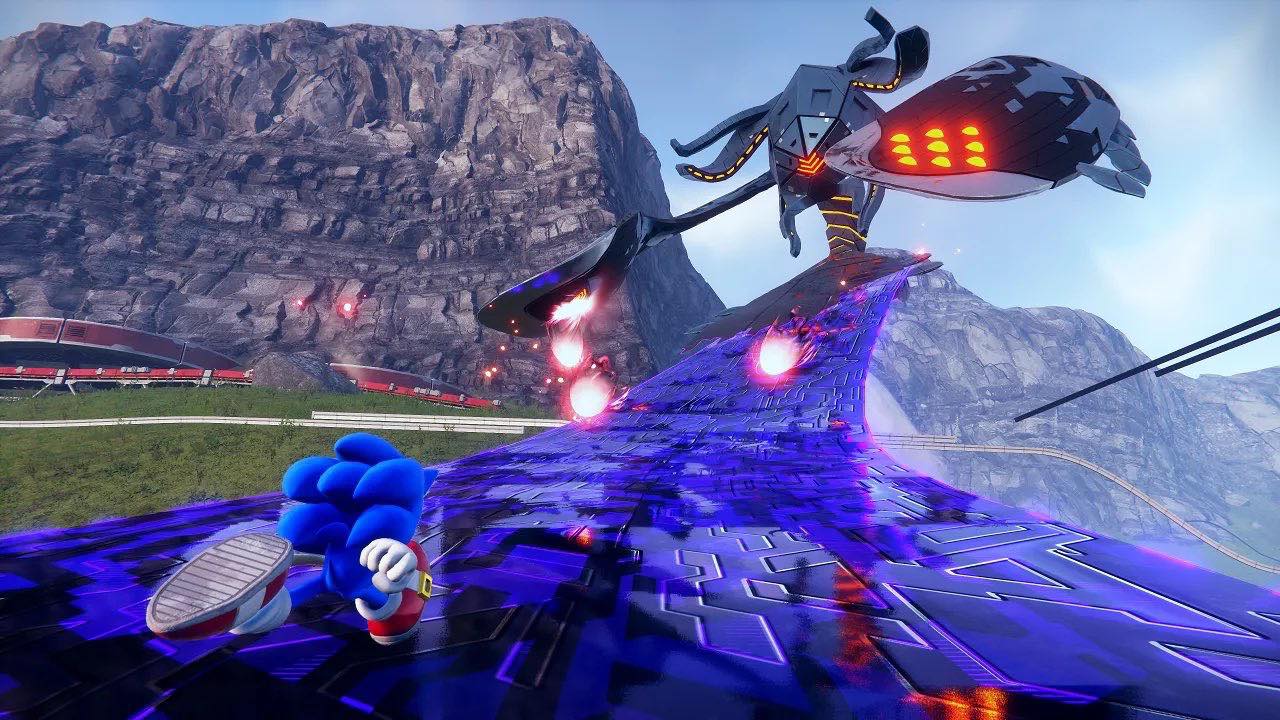
What can you tell me about how combat works in Sonic Frontiers and how the team landed on the current design?
TI: In the previous games, it was this linear format. And the rules of the game were that you start somewhere and you need to get to the goal. And so Sonic really only had the homing attack as a way to defeat enemies and continue moving forward, maybe defeating them rapidly like boom, boom, boom, just getting through them real quick. But with the new open zone format and style of gameplay, it really allows people to kind of go where they want to and do the things that they are interested in, maybe see something off in the distance that excites them and go there and figure out what’s going on.
Because we have this kind of freedom of choice and freedom of movement, we’re also kind of allowing ourselves the time to engage an enemy in battle and not be worried about getting to the goal line so much. Because of that we realised Sonic needs more actions and he needs more battle actions. And what better way to fit this open, free environment than to have a skill tree where you can say, this is how I want Sonic to play as a character as I’m progressing through the story.
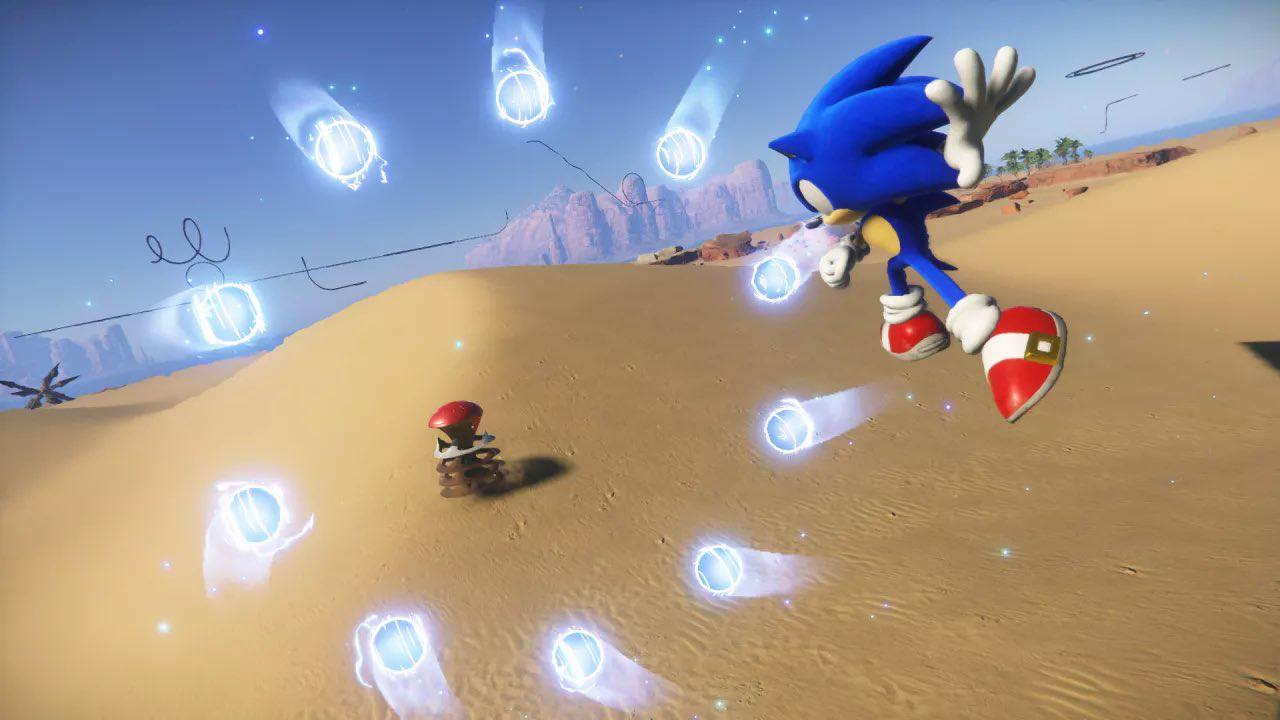
So having enemies that are interesting, that do require some thought and coordination to defeat, having enemies with different kinds of ways of defeating them and techniques that maybe will work against one but won’t work against another or will be really valuable against yet a different enemy. Having those enemies be able to even exist and then have Sonic engage them in battle is all really thanks to the open zone format that the team created.
And like the combat, what can you tell me about the approach to the puzzles we’ve seen and played in the open zone areas and how they fit into the overall game?
TI: On the island, there’s kind of a few things going on, we do want to have a lot of high speed action and we do want people to engage in the battles with the Guardians in order to get the Portal Gears and all the other things that they need to advance the story and continue on with the game. But there’s also puzzles that are on the island, we want to make sure the island is filled with lots of things to do and the puzzles on the island are there to provide something challenging for the player. With the puzzles, really what they do is when you start completing the puzzles, the map is going to start expanding and there won’t be so much covered up. You’ll start opening up these areas of the map, understanding more about what’s on the map and in the world.
So for people who really want to kind of see everything on that map, the puzzles are the way to kind of open up the entire area from a visual standpoint. On the first island, we have lots of easy stuff, but as you progress through the different islands, you know, the next island is going to get more challenging. There’s going to be puzzles that not only are challenging your brain but we have other puzzles that are going to challenge your reflexes and technical control abilities, so there are going to be a variety of different puzzles throughout the game.
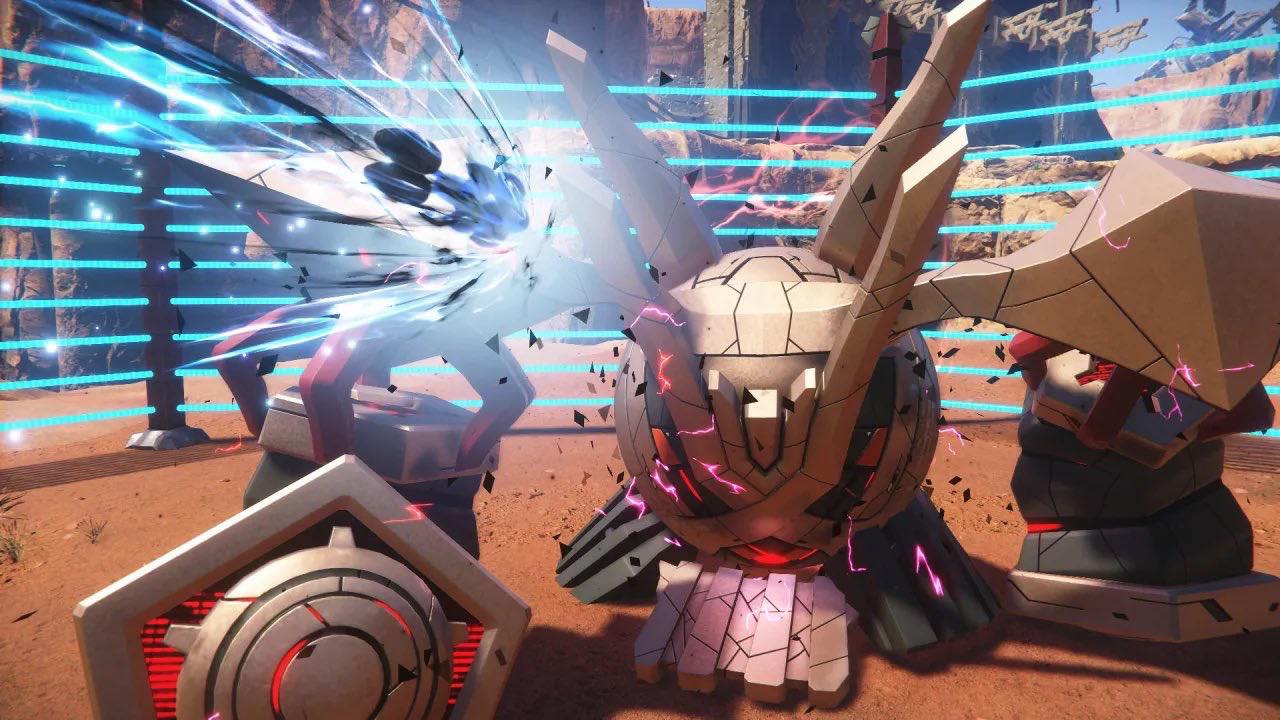
What sort of feelings or emotions are you trying to invoke in Sonic Frontiers, especially with this very big departure in visuals and music from previous 3D Sonic games?
TI: The feelings on the island really get back to the story and how, you know, Sonic has gone to this island with his friends and all of a sudden they’re in Cyberspace, and he’s the only one out of Cyberspace. The whole game starts with this kind of, I don’t want to say it’s sad, but it’s like, where did my friends go? What am I doing here? How do I help them? There’s a lot of insecurity about what’s going on, and what Sonic needs to do to get things back to normal. And there is a lot of mystery on the island.
The team wanted to make sure not only that it visually comes through, but when we talk about sound design and the audio, we want the players to feel like Sonic as Sonic would be on the island. So this mysterious feeling of, I’m not sure what’s going on, I don’t know what to do, also plays into the feel of the island. If you’re just running around, and it’s nice and there’s trees and nothing more is really going on, the music and sound effects are going to match that feeling, as if you’re there with Sonic on the island. Then as you get to bosses or you get to something that’s more like, something bad is going on, I need to do something, the music and the sound design shifts and changes to match not only how something feels, but what’s going on in the world and how you want to be reacting to things.
Sonic Frontiers releases on November 8th for PS5, PS4, Nintendo Switch, Xbox Series X|S & PC. The cheapest copy is currently $78 on Amazon.


